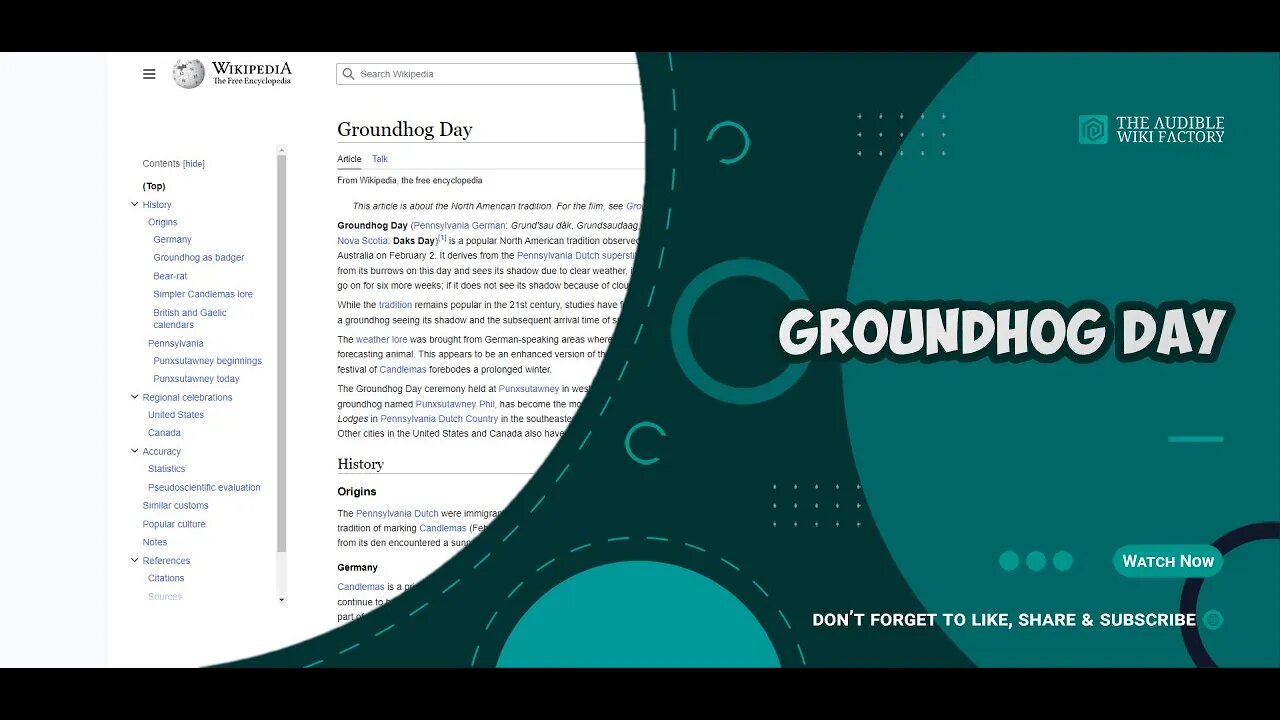Premium Only Content

Groundhog Day is a popular North American tradition observed in the United States, Canada, and
Groundhog Day is a popular North American tradition observed in the United States, Canada, and Australia on February 2. It derives from the Pennsylvania Dutch superstition that if a groundhog emerges from its burrows on this day and sees its shadow due to clear weather, it will retreat to its den and winter will go on for six more weeks; if it does not see its shadow because of cloudiness, spring will arrive early.
While the tradition remains popular in the 21st century, studies have found no consistent association between a groundhog seeing its shadow and the subsequent arrival time of spring-like weather.
The weather lore was brought from German-speaking areas where the badger (German: Dachs) is the forecasting animal. This appears to be an enhanced version of the lore that clear weather on the Christian festival of Candlemas forebodes a prolonged winter.
The Groundhog Day ceremony held at Punxsutawney in western Pennsylvania, centering on a semi-mythical groundhog named Punxsutawney Phil, has become the most frequently attended ceremony. Grundsow Lodges in Pennsylvania Dutch Country in the southeastern part of the state observe the occasion as well. Other cities in the United States and Canada also have adopted the event.
ORIGINS
The Pennsylvania Dutch were immigrants from German-speaking areas of Europe. The Germans had a tradition of marking Candlemas (February 2) as "Badger Day" (Dachstag), on which if a badger emerging from its den encountered a sunny day, thereby casting a shadow, it presaged four more weeks of winter.
LINK TO ARTICLE: http://en.wikipedia.org/wiki/Groundhog_Day
TAGS: Groundhog Day, Weather lore, Superstitions, Pennsylvania German culture, Pennsylvania culture, Public holidays in the United States, Public holidays in Canada, February observances, Groundhog Day
#GeneralKnowledge #AudibleWikiFactory #Audible #Wikipedia #GroundhogDay
-
 13:12
13:12
The Audible Wiki Factory
2 years agoThe Carnival of Venice is an annual festival held in Venice, Italy. The carnival ends on Shrove
540 -
 LIVE
LIVE
Dear America
1 hour agoBOMBSHELL!! Hillary Was on Tranquilizers!! AND The Clintons Are Being Subpoenaed Over Epstein!!
24,258 watching -
 LIVE
LIVE
Matt Kohrs
9 hours agoStocks Push New Highs, Breaking Market News & Live Trading $1M w/ AI
816 watching -
 LIVE
LIVE
Wendy Bell Radio
6 hours agoNo One Is Above The Law
9,453 watching -
 LIVE
LIVE
LFA TV
12 hours agoLFA TV ALL DAY STREAM - THURSDAY 7/24/25
3,864 watching -
 1:21:47
1:21:47
JULIE GREEN MINISTRIES
3 hours agoUNPRECEDENTED MOVES ARE BEING MADE TO BRING BACK THE GOLD STANDARD IN THIS NATION
100K113 -
 1:26:49
1:26:49
Chicks On The Right
3 hours agoKohlberger gets BLASTED, Macrons sue Candace, Tulsi goes after Obama, and more on Epstein files
19.3K -
 LIVE
LIVE
Welcome to the Rebellion Podcast
12 hours ago $0.60 earnedI Feel Fine - WTTR Podcast Live 7/24
299 watching -
 1:20:39
1:20:39
Game On!
17 hours ago $1.68 earnedCommanders Are Built To WIN NOW! 2025 Preview!
26.4K2 -
 LIVE
LIVE
The Bubba Army
23 hours agoGhislaine Maxwell to Testify! - Bubba the Love Sponge® Show | 7/24/25
1,812 watching